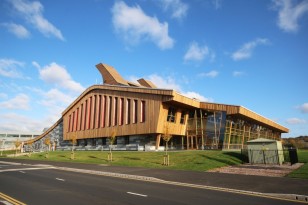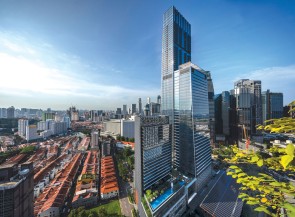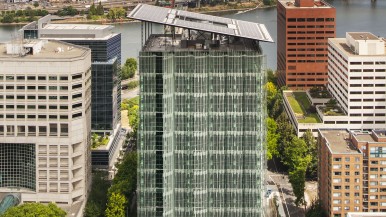Blog / Sustainable Construction
Energy Certifications in Architecture: 14 Examples Worldwide
Categories
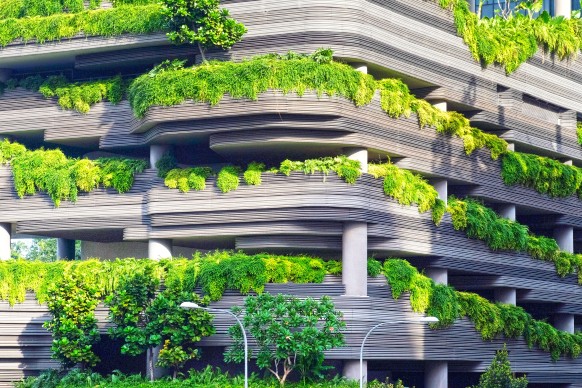
In the pursuit of a greener future, architects play a pivotal role in designing energy-efficient buildings that minimise environmental impact. Embracing sustainable practices is not just a trend; it's a necessity to combat climate change.
As global concerns about climate change mount, architects are stepping up to the challenge by integrating energy-efficient practices into their designs.
In this context, energy certifications have emerged as a powerful tool to guide and recognize sustainable building efforts.
This article explores 14 prominent energy certifications in architecture, shedding light on how they empower the industry to create environmentally conscious structures that stand as beacons of change.
1. LEED (Leadership in Energy and Environmental Design)
What it is? LEED is a globally recognized certification program developed by the U.S. Green Building Council (USGBC) that assesses a building's environmental impact and encourages sustainable practices.
What it covers? LEED evaluates various aspects, including energy efficiency, water usage, materials, indoor environmental quality, and site sustainability.
A green building example: The Bullitt Center in Seattle, USA.
The Bullitt Center in Seattle, USA, stands as a pioneering example of sustainable architecture. It proudly holds the distinction of being one of the greenest commercial buildings in the world, with its commitment to sustainability evident in its numerous energy certifications. This innovative building has achieved both LEED Platinum and Living Building Challenge certifications, showcasing its exceptional environmental performance. It features an impressive rainwater harvesting system, composting toilets, and a cutting-edge solar panel array that provides all of its energy needs, making it a net-zero energy building.
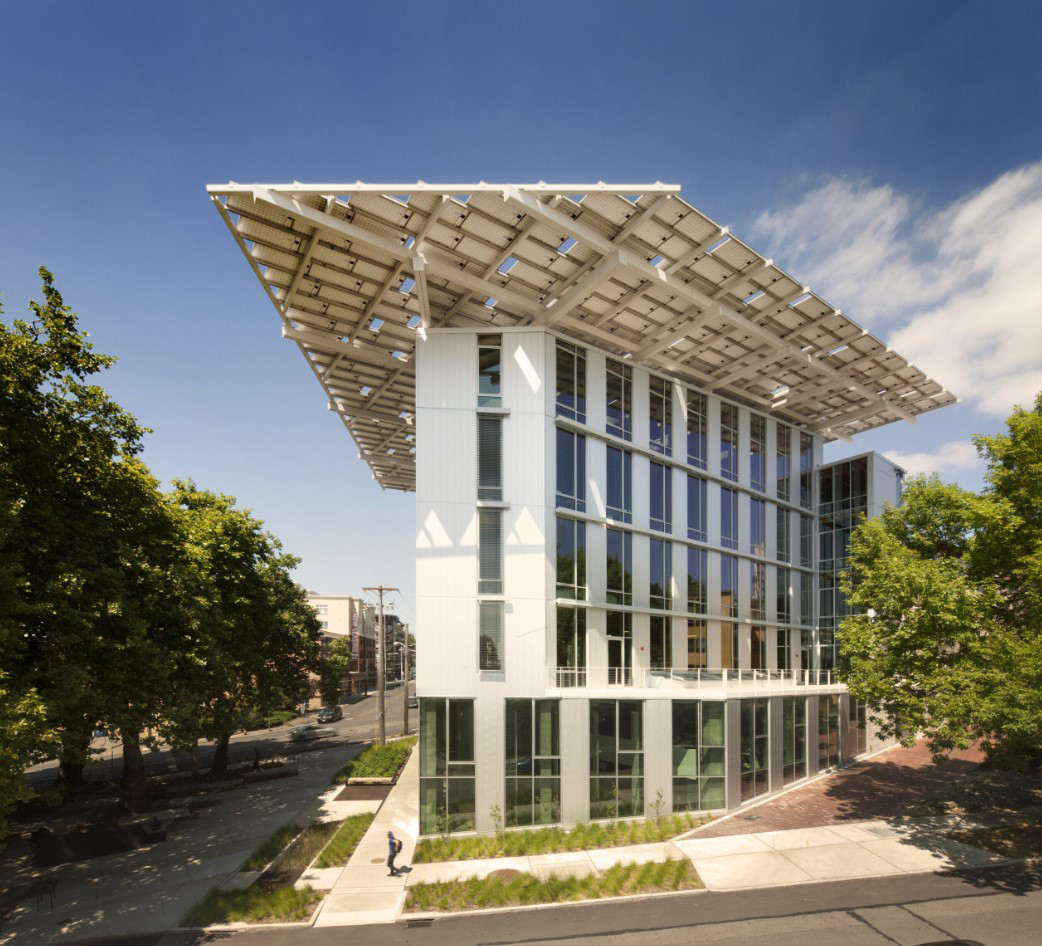
Source: https://living-future.org
2. BREEAM (Building Research Establishment Environmental Assessment Method)
What it is? BREEAM, originated in the UK, is a widely adopted certification system that evaluates and rates the sustainability performance of buildings.
What it covers? BREEAM assesses areas like energy and water efficiency, ecological impact, waste management, and materials used in construction.
A green building example: The Crystal in London, UK.
Located in London, the Crystal is a remarkable sustainable building that exemplifies the city's dedication to green initiatives. The Crystal boasts BREEAM Outstanding certification, reflecting its outstanding energy efficiency and environmental design. This iconic structure incorporates advanced technologies like ground-source heat pumps and solar panels to reduce energy consumption. Moreover, it serves as an exhibition space to educate visitors about sustainable urban development, making it a beacon of green architecture in the heart of London.
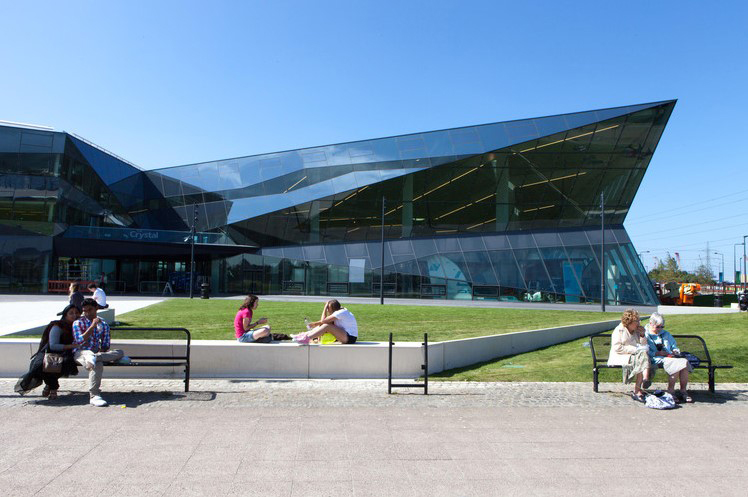
Source: ArchDaily
3. DGNB (Deutsche Gesellschaft für Nachhaltiges Bauen - German Sustainable Building Council)
What it is? DGNB is a German certification system that promotes sustainable construction practices through comprehensive evaluations.
What it covers? DGNB assesses environmental, economic, sociocultural, and functional aspects of buildings, aiming for holistic sustainability.
A green building example: The Kö-Bogen II in Düsseldorf, Germany.
This certified DGNB Platinum building showcases cutting-edge energy-efficient technologies and advanced green roofing. Notable sustainable elements include efficient heating and cooling systems, green roofs, and a rainwater harvesting system that supports irrigation and toilet flushing.
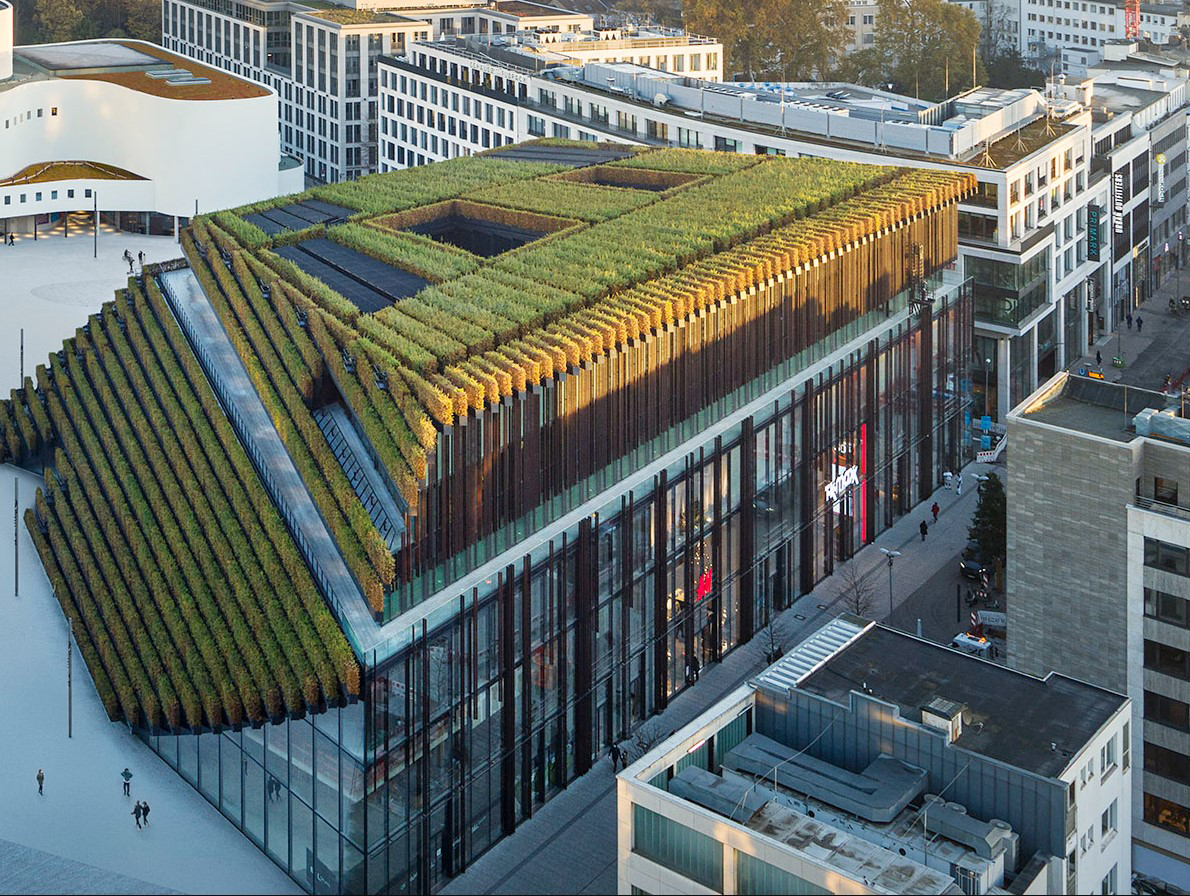
Source: discovercleantech.com
4. Green Star
What it is? Green Star is an Australian rating system that evaluates the environmental impact of buildings across different categories.
What it covers? Green Star assesses energy and water usage, emissions, materials, and indoor environmental quality.
A green building example: The Pixel Building in Melbourne, Australia.
In the vibrant city of Melbourne, the Pixel Building is a standout example of sustainable architecture. It holds a 6 Star Green Star rating, showcasing its commitment to sustainability and energy efficiency. The building's unique pixelated façade is not just visually striking but also functional, designed to optimize natural daylight while minimizing heat gain. Energy-saving features include a tri-generation system that generates electricity, heating, and cooling onsite, along with rainwater harvesting for irrigation and toilet flushing.
![]()
Source: Broadsheet
5. WELL Building Standard
What it is? The WELL Building Standard is a performance-based system for measuring, certifying, and monitoring features of the built environment that impact human health and well-being.
What it covers? WELL focuses on air, water, nourishment, light, fitness, and comfort to create spaces that promote occupant health and productivity.
A green building example: The Delos Headquarters in New York City, USA.
The Delos Headquarters in New York City is a testament to wellness-focused sustainable design. This cutting-edge building has earned both LEED Platinum and WELL Building Standard certifications, emphasizing its commitment to both environmental and human health. Energy efficiency is at the core of its design, with features like efficient HVAC systems, LED lighting, and advanced water-saving technologies. The Delos Headquarters serves as a model for workspaces that prioritize the well-being of their occupants while minimizing their environmental footprint.
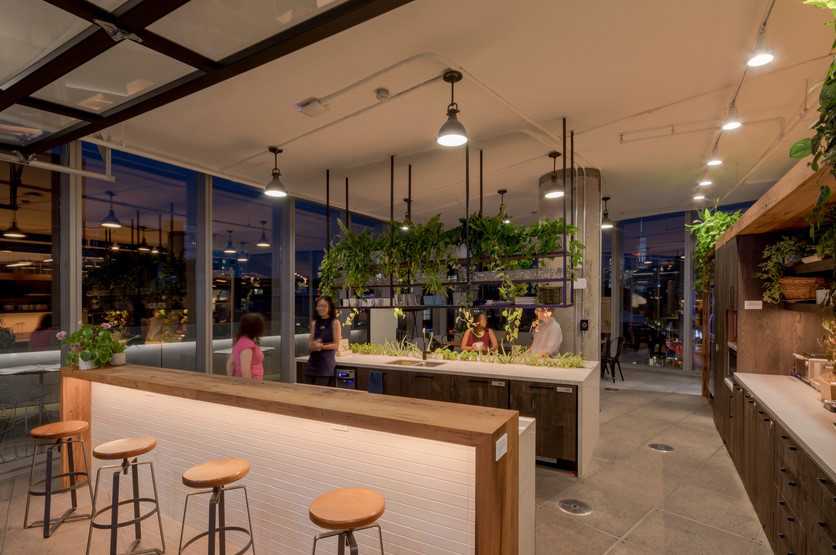
Source: Atelier Ten
6. VERDE (Valorización Energética de Edificaciones)
What it is? VERDE is a Spanish certification that evaluates and recognizes the energy performance and environmental impact of buildings.
What it covers? VERDE assesses energy efficiency, renewable energy integration, water management, and the use of sustainable materials.
A green building example: Imagine Montessori School in Valencia, Spain.
Imagine Montessori is the first BREEAM and Green certified school. All the building's lighting is LED, with intensity and colour temperature control that is automatically regulated according to the time of day, following the circadian rhythms of nature. Moreover, it has a continuous insulation system without thermal bridges and solar protections that allow the entrance of light to be controlled according to the needs of each season. The use of vaults and sound-absorbing materials in the classrooms has been studied to reduce ambient sound and control reverberation, accentuating it in the central area and reducing it on the sides. Finally, the entire building has been designed to minimise energy use throughout its useful life, achieving a 44.8% saving in energy consumption and associated carbon emissions during its operation.
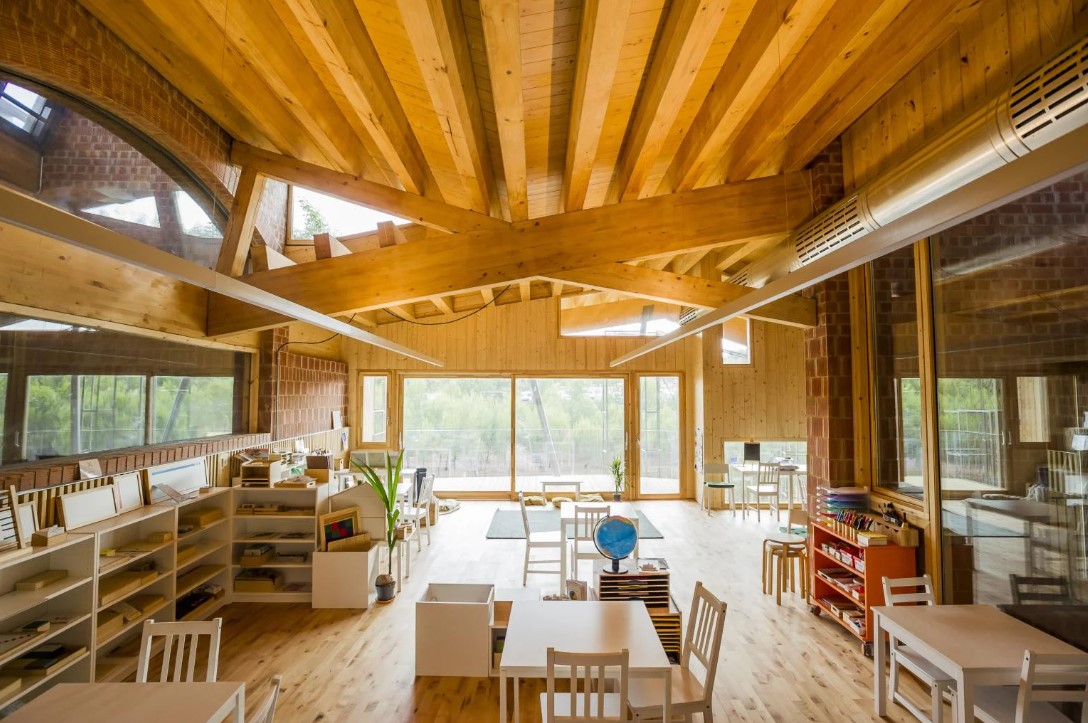
Source: Blog Zero Consulting
7. Passivhaus
What it is? Passivhaus is an internationally recognized energy efficiency standard that focuses on achieving high levels of comfort and indoor air quality while minimising energy consumption.
What it covers? Passivhaus emphasises excellent insulation, airtight construction, high-performance windows, and heat recovery ventilation.
A green building example: The Vauban District in Freiburg, Germany.
The Vauban District in Freiburg, Germany, represents a holistic approach to sustainable urban planning. While not a single building, this neighborhood has earned international recognition for its commitment to sustainability. It features passive solar design, car-free zones, and an extensive network of public transportation. The Vauban District has received various awards and certifications, including the German Sustainability Award, for its innovative approach to eco-friendly living and urban development.
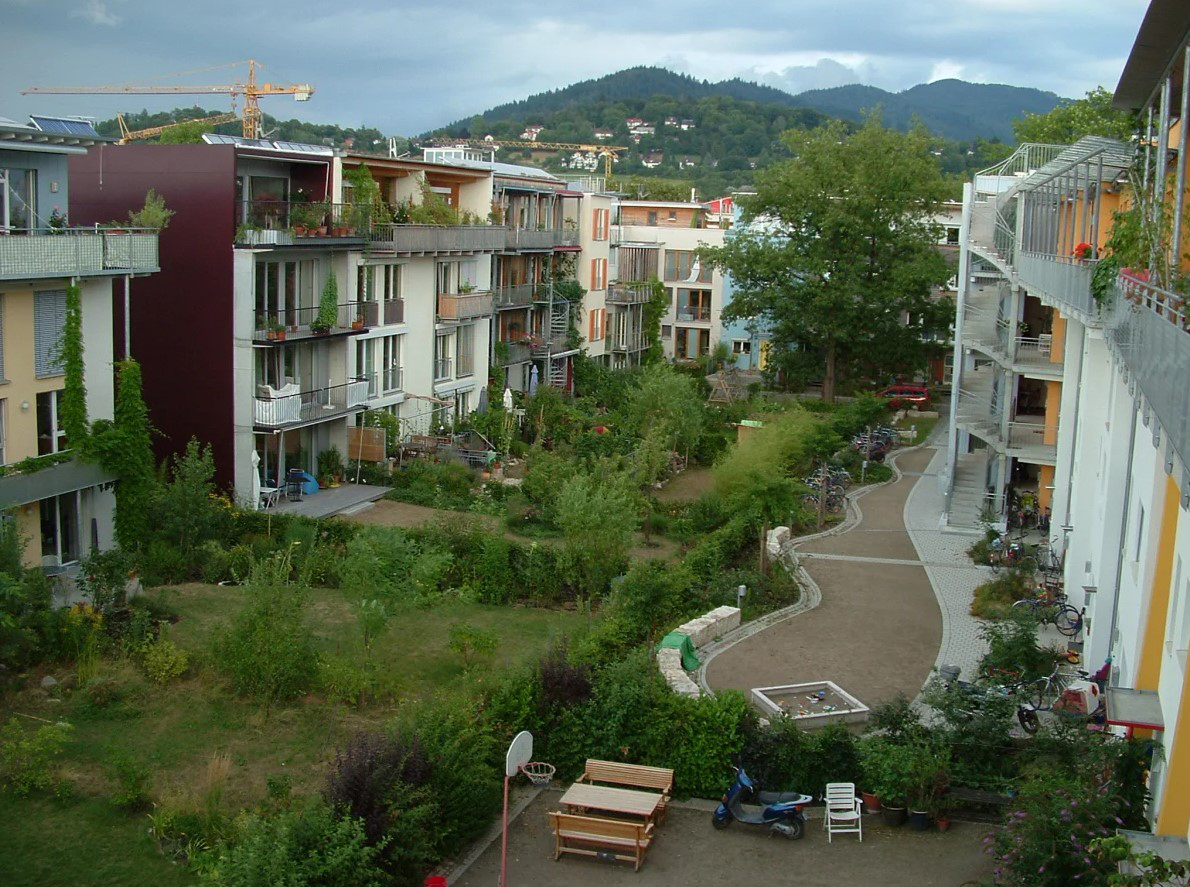
Source: makinglewes

8. Estidama Pearl Rating System
What it is? Estidama Pearl Rating System is developed specifically for Abu Dhabi and focuses on sustainable urban development and building design.
What it covers? This certification evaluates energy, water, and waste management, as well as the use of sustainable materials and local resources.
A green building example: The Abu Dhabi Investment Council Headquarters.
This landmark building achieved a 3 Pearl Rating, employing efficient cooling systems and energy-saving lighting. Its energy-efficient design incorporates a high-performance façade, solar shading, and efficient lighting systems. Additionally, it utilizes a state-of-the-art district cooling system, reducing energy consumption and environmental impact in the scorching desert climate of Abu Dhabi.
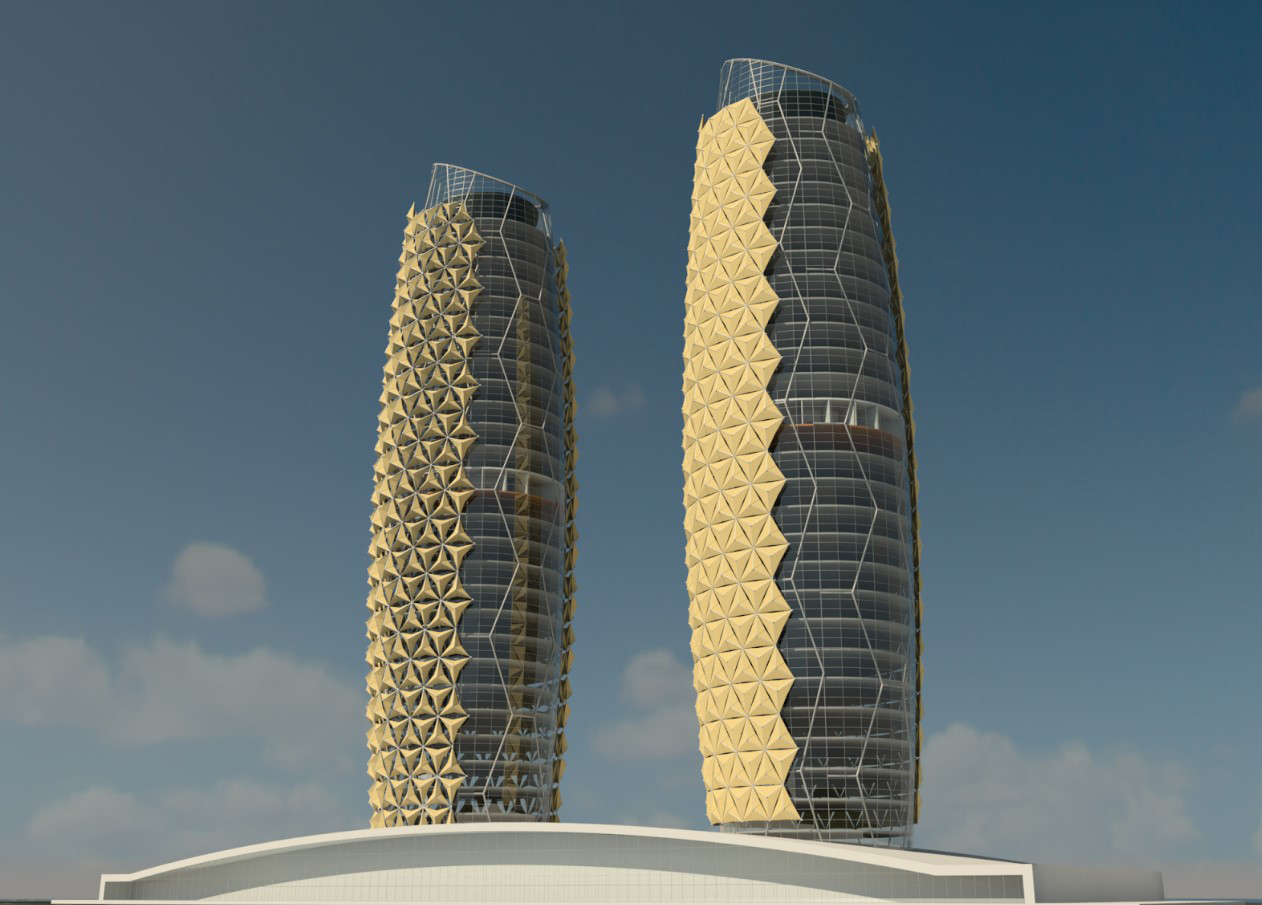
Source: 2bp
9. Green Building Index (GBI)
What it is? GBI is Malaysia's green rating system that promotes sustainable practices in the construction industry.
What it covers? GBI assesses energy efficiency, indoor environmental quality, water usage, materials, and site sustainability.
A green building example: The Platinum Sentral in Kuala Lumpur, Malaysia.
The Platinum Sentral in Kuala Lumpur, Malaysia, is an epitome of sustainable urban development. It has achieved the prestigious Green Building Index (GBI) Platinum certification, signifying its commitment to environmental sustainability. The building incorporates energy-efficient features such as advanced lighting systems, high-performance glazing, and a comprehensive rainwater harvesting system. Its strategic location in the heart of Kuala Lumpur encourages the use of public transportation, reducing the carbon footprint of occupants and visitors.
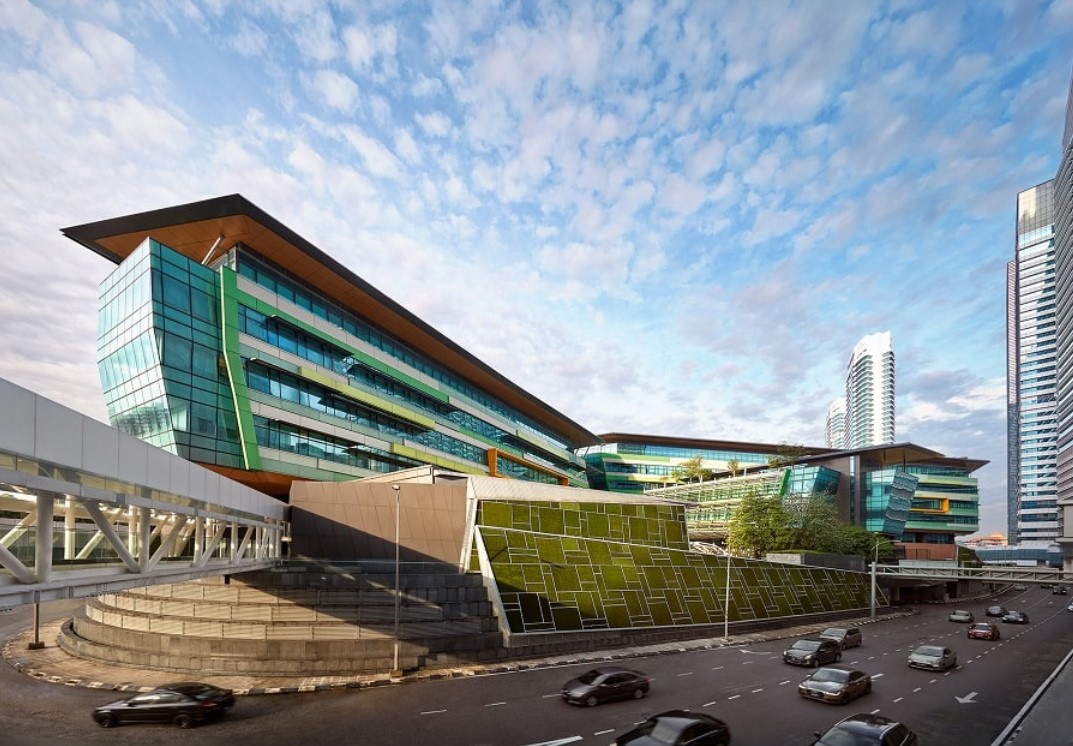
Source: Sentralreit.com
10. CASBEE (Comprehensive Assessment System for Built Environment Efficiency)
What it is? CASBEE is a Japanese certification system that evaluates the overall sustainability of buildings and urban environments.
What it covers? CASBEE assesses energy and resource efficiency, environmental impact, and the comfort of occupants.
A green building example: The Tower of the Sun in Osaka, Japan.
The Tower of the Sun in Osaka, Japan, is a unique architectural marvel that showcases Japan's commitment to sustainability. While not a contemporary building, it has been retrofitted with modern energy-efficient technologies. Its sustainable elements include LED lighting, efficient HVAC systems, and efforts to preserve its historical and cultural significance, making it an iconic and eco-conscious landmark.
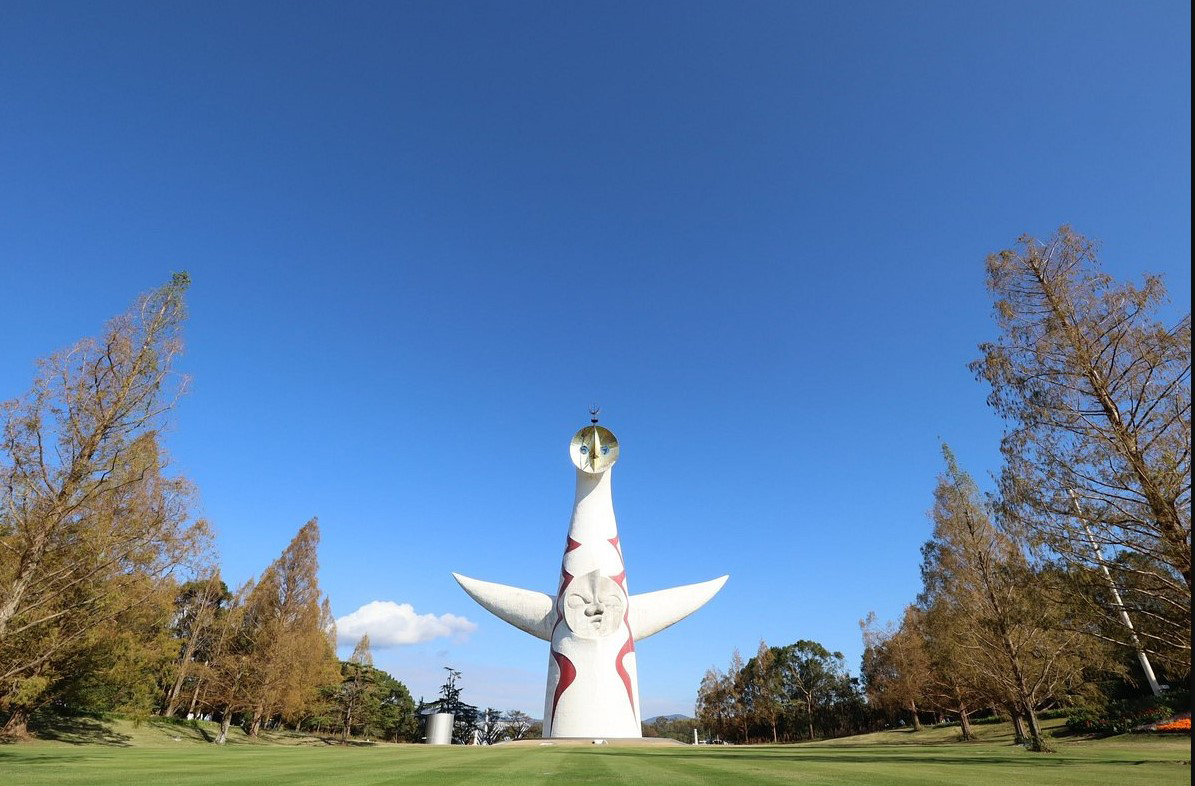
Source: Inside Osaka
11. EDGE (Excellence in Design for Greater Efficiencies)
What it is? EDGE is a global certification program initiated by the International Finance Corporation (IFC) that promotes resource-efficient building designs.
What it covers? EDGE evaluates energy, water, and material use, as well as embodied energy in construction.
A green building example: Cape Town Marriott Hotel Crystal Towers
Sustainable features include energy-efficient lighting, solar water heating, and rainwater harvesting for irrigation. The Crystal Towers demonstrate that sustainability can be seamlessly integrated into upscale developments.
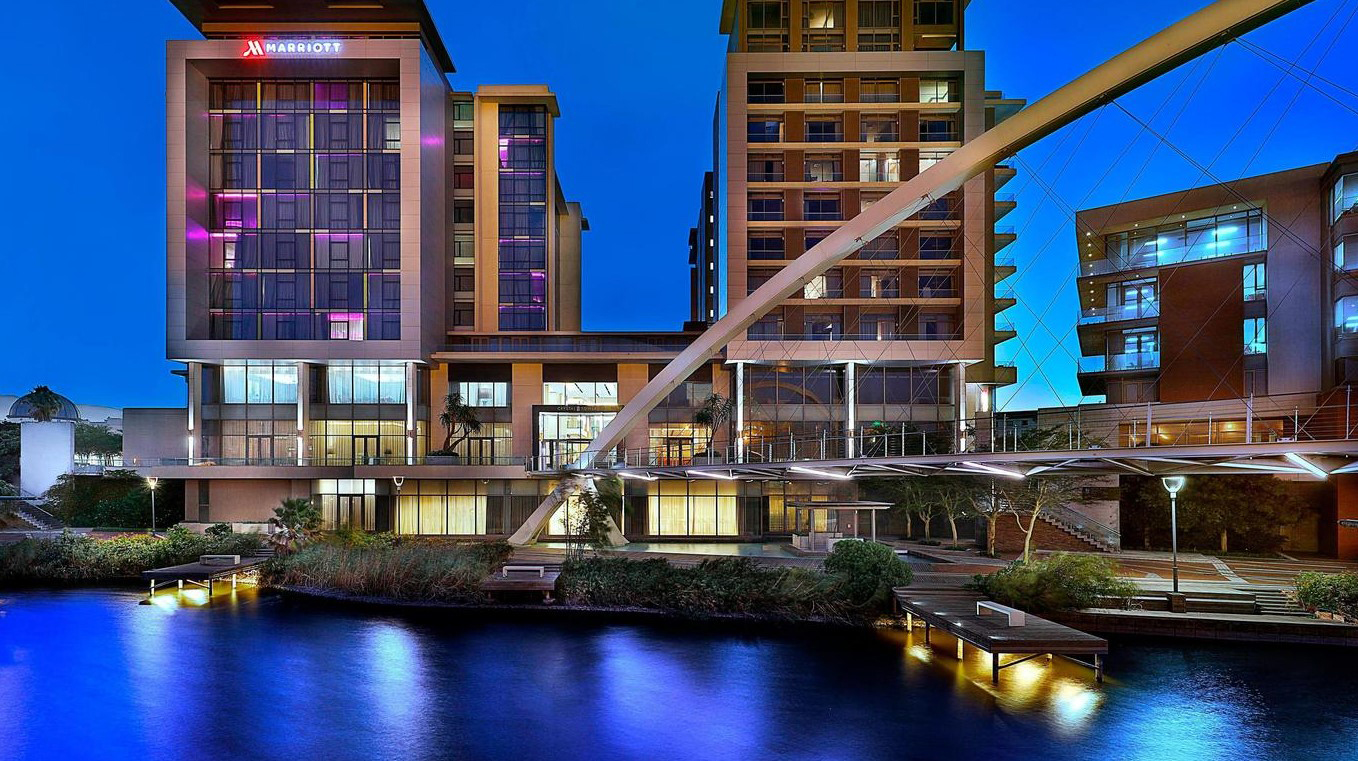
Source: Kayak
12. GRIHA (Green Rating for Integrated Habitat Assessment)
What it is? GRIHA is an Indian green building rating system developed by The Energy and Resources Institute (TERI) that focuses on sustainability in the building sector.
What it covers? GRIHA assesses energy, water, and waste management, as well as the use of renewable energy sources and eco-friendly materials.
A green building example: The Suzlon One Earth in Pune, India.
This GRIHA 5-star rated building is a striking example of a corporate campus designed with sustainability in mind. Sustainable design elements encompass energy-efficient HVAC systems, green landscaping, and extensive use of recycled and renewable materials. The campus also incorporates a rainwater harvesting system and promotes eco-friendly transportation options for its employees.
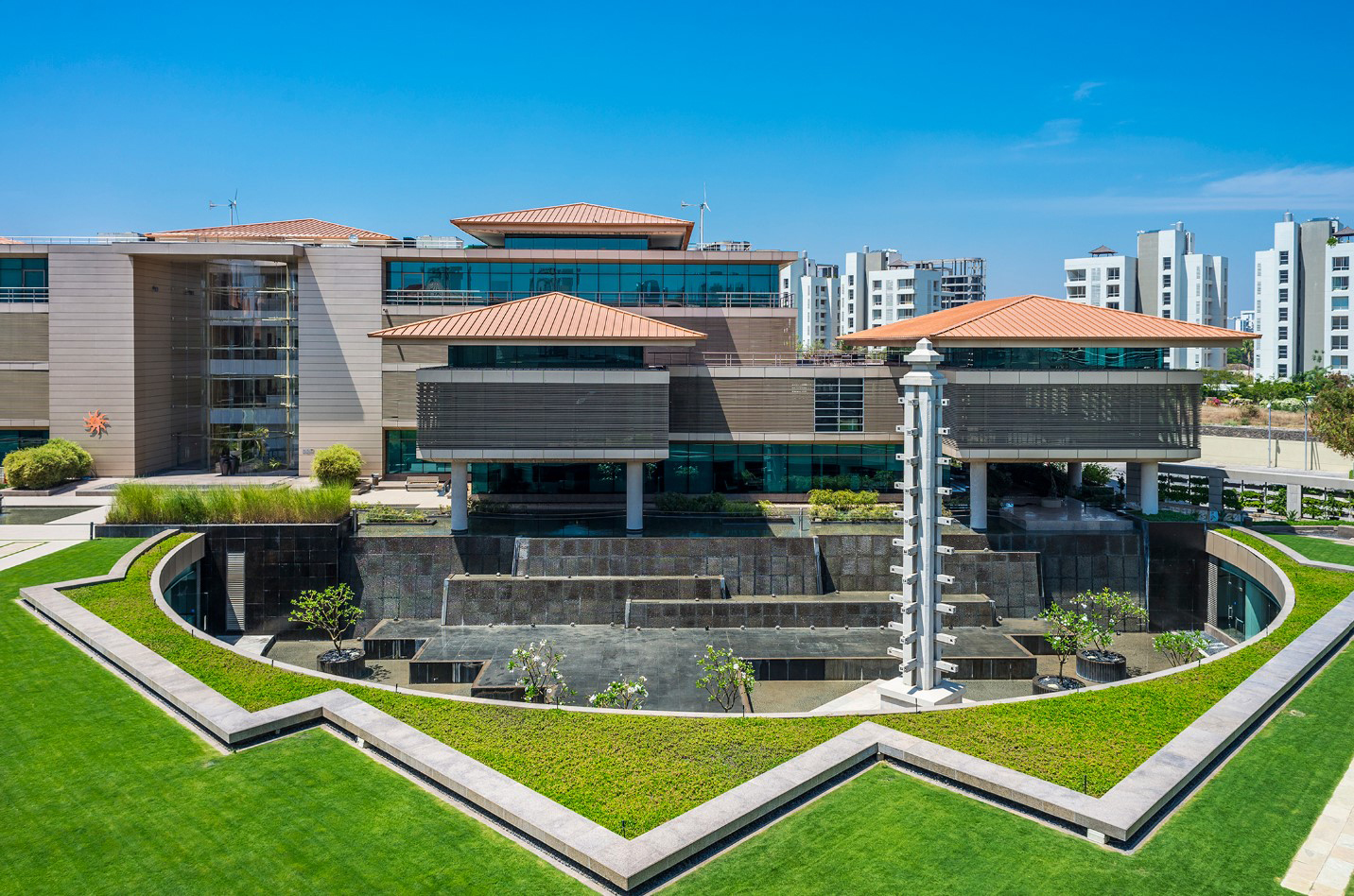
Source: https://cdn.ca.emap.com/
13. Green Mark
What it is? Green Mark is Singapore's sustainability certification that encourages environmentally friendly building practices.
What it covers? Green Mark evaluates energy efficiency, water conservation, indoor environmental quality, and other sustainable features.
A green building example: The Parkroyal on Pickering in Singapore.
The Parkroyal on Pickering in Singapore is a stunning hotel that blurs the lines between nature and architecture. This eco-friendly hotel has earned the BCA Green Mark Platinum certification, a testament to its commitment to sustainable practices. The building features lush greenery integrated into its façade, which not only enhances aesthetics but also provides natural cooling and shade. Additionally, the hotel employs energy-efficient lighting, smart HVAC systems, and a rainwater harvesting system, ensuring it operates with minimal environmental impact.
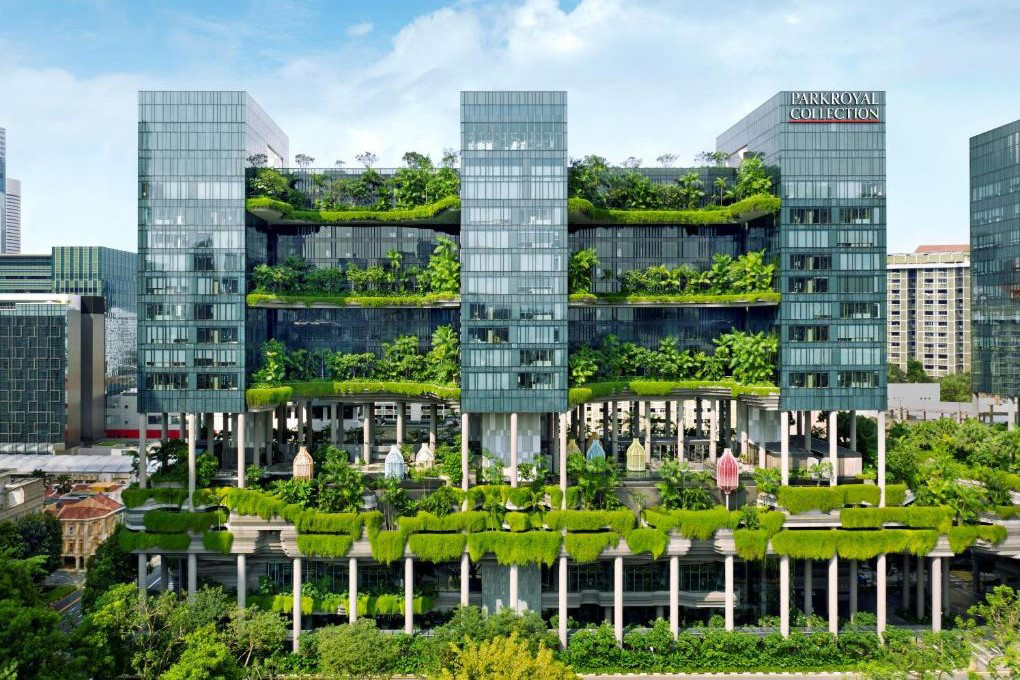
Source: https://cf.bstatic.com/
14. HQE (Haute Qualité Environnementale - High Environmental Quality)
What it is? HQE is a French certification system that promotes sustainable building practices and focuses on overall environmental quality.
What it covers? HQE assesses energy, water, and waste management, as well as the use of eco-friendly materials and occupant comfort.
A green building example: The Cité du Design in Saint-Étienne, France.
This remarkable building exemplifies HQE's principles with energy-efficient lighting, renewable energy sources, and natural ventilation. This innovative center promotes eco-conscious practices through exhibitions and events, emphasizing the importance of sustainable design and its impact on society. It serves as an inspiring example of how sustainable architecture and design can contribute to cultural and environmental awareness.
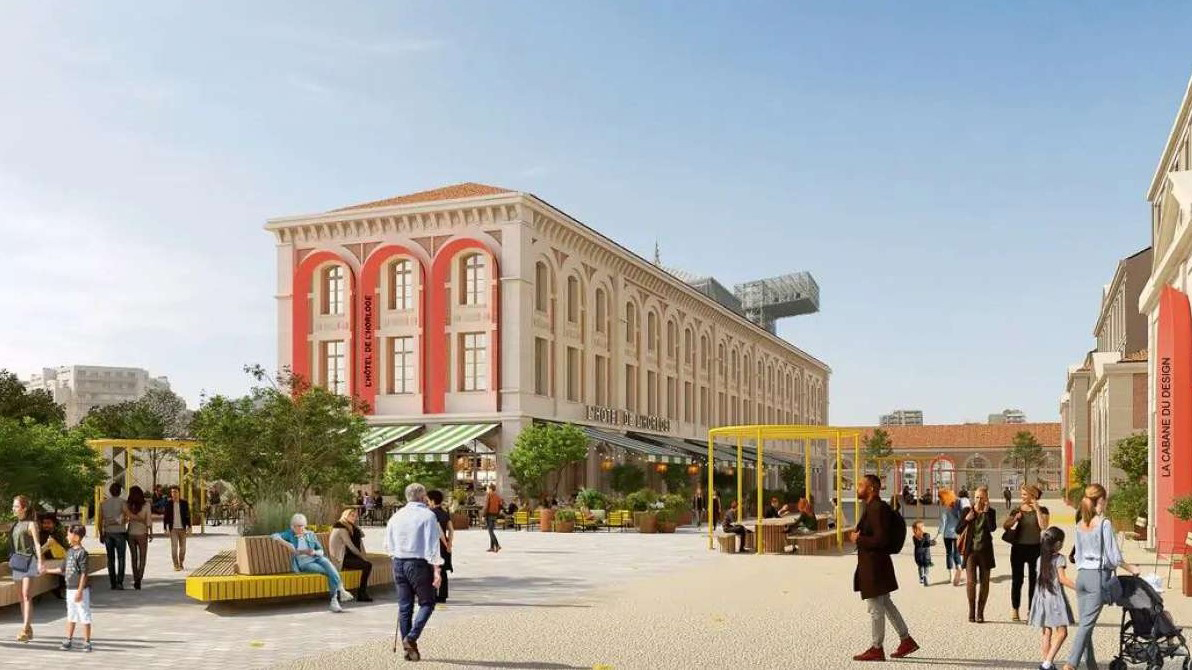
Source: France.fr
Conclusion
Energy certifications in architecture have revolutionised the way buildings are designed and constructed across the globe. By fostering sustainable practices and rewarding environmentally conscious efforts, these certifications empower the industry to create a brighter, greener future for generations to come. From LEED in the Americas to GRIHA in Asia, each certification plays a crucial role in promoting sustainable building excellence worldwide. As architects continue to embrace these certifications, our cities and communities will thrive in harmony with nature.
Empower your architectural designs with a specialised course
Are you ready to take the next step in shaping the future of architecture? Enhance your expertise in sustainable design and energy certifications with our specialised postgraduate course in Sustainable Architecture. Our comprehensive program will equip you with cutting-edge knowledge and practical skills to create eco-friendly buildings that meet the highest energy standards and prioritise the well-being of occupants.


